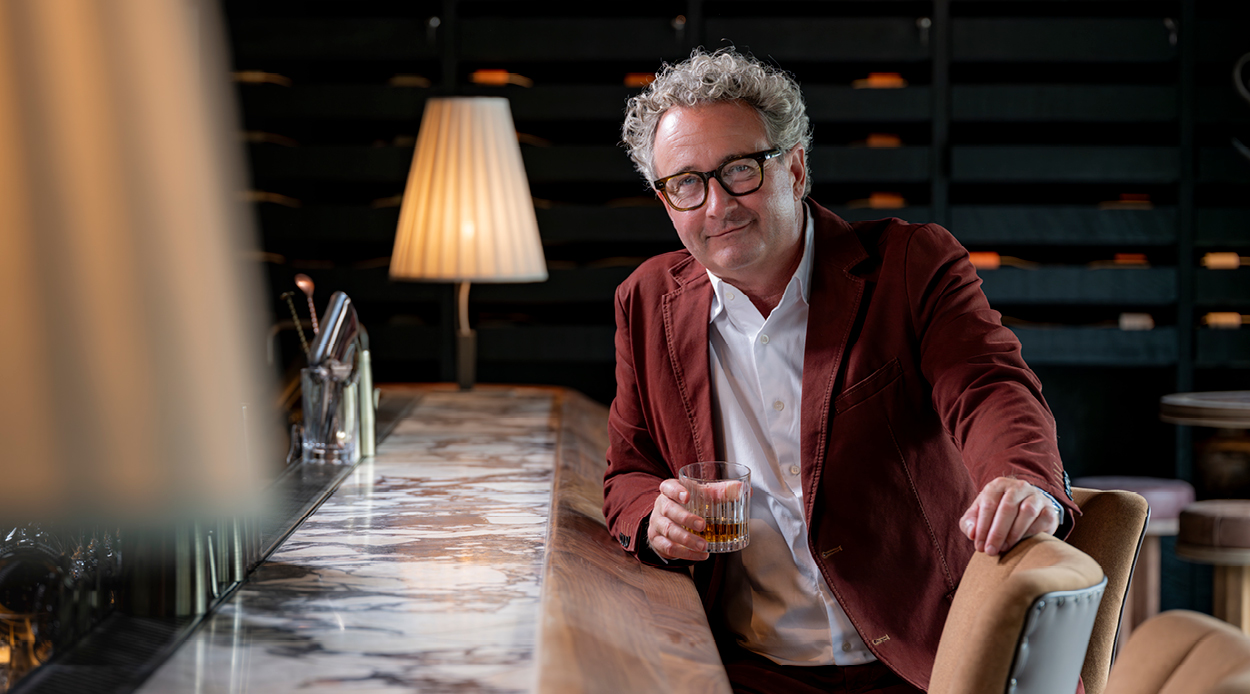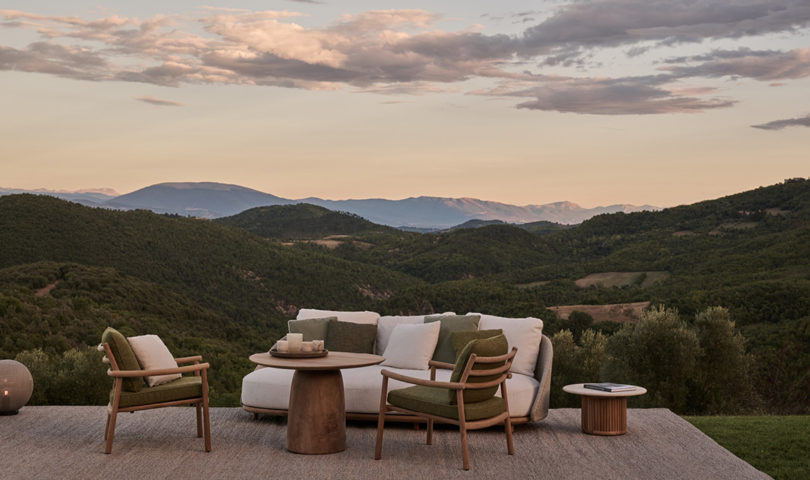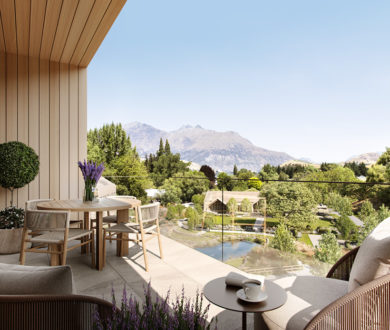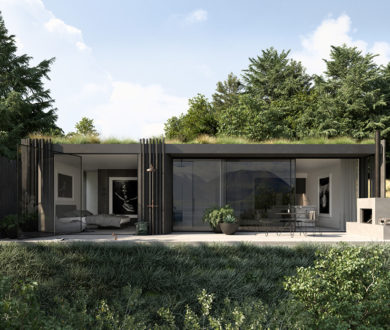As the founder and CEO of Winton, one of New Zealand’s most prolific property development companies, Chris Meehan is someone who has taken the responsibility of shaping the future of our urban landscapes in a very meaningful way. From his early childhood on a rural South Island farm to his formative years building a property empire in Sydney, to now, undertaking some of the most significant residential, commercial and hospitality developments in the country, Meehan is a man with vision, ambition and the ability to execute a number of eye-watering projects with a level of finesse and careful attention to detail that is rarely seen. And while his success is undeniable, for Meehan, the driving forces behind it are simple: a passion for design and a desire to build for the future.
It was a deep love for design that first drew Chris Meehan into the competitive world of property. Having once harboured dreams of becoming an architect (although eventually deciding to pursue his passion from a different angle) Meehan knew from a young age that creating spaces in which people could not only live, but could truly thrive, was the pursuit that would drive his career. And that is exactly what he, as the CEO of New Zealand’s most prolific property development company has gone on to do. (Although whether he could have predicted the immense scale at which his spaces would materialise, is another question entirely.)
Meehan was born in the small South Island town of Winton (the name he would eventually give his development group) near where he spent the first 11 years of his life on a farm before his parents parted ways and he moved to Sydney with his mother. Living in a much bigger city but with far fewer resources at his disposal, Meehan explains that while the challenges were certainly greater, the opportunities for those willing to pull themselves up by their bootstraps were abundant, and he wasn’t going to miss his chance at building something better. “We had nothing,” Meehan tells me in his straightforward manner, “so I figured that the only way to get what I wanted was to work my ass off, and that’s pretty much what I’ve done ever since, it really isn’t any more complicated than that.”
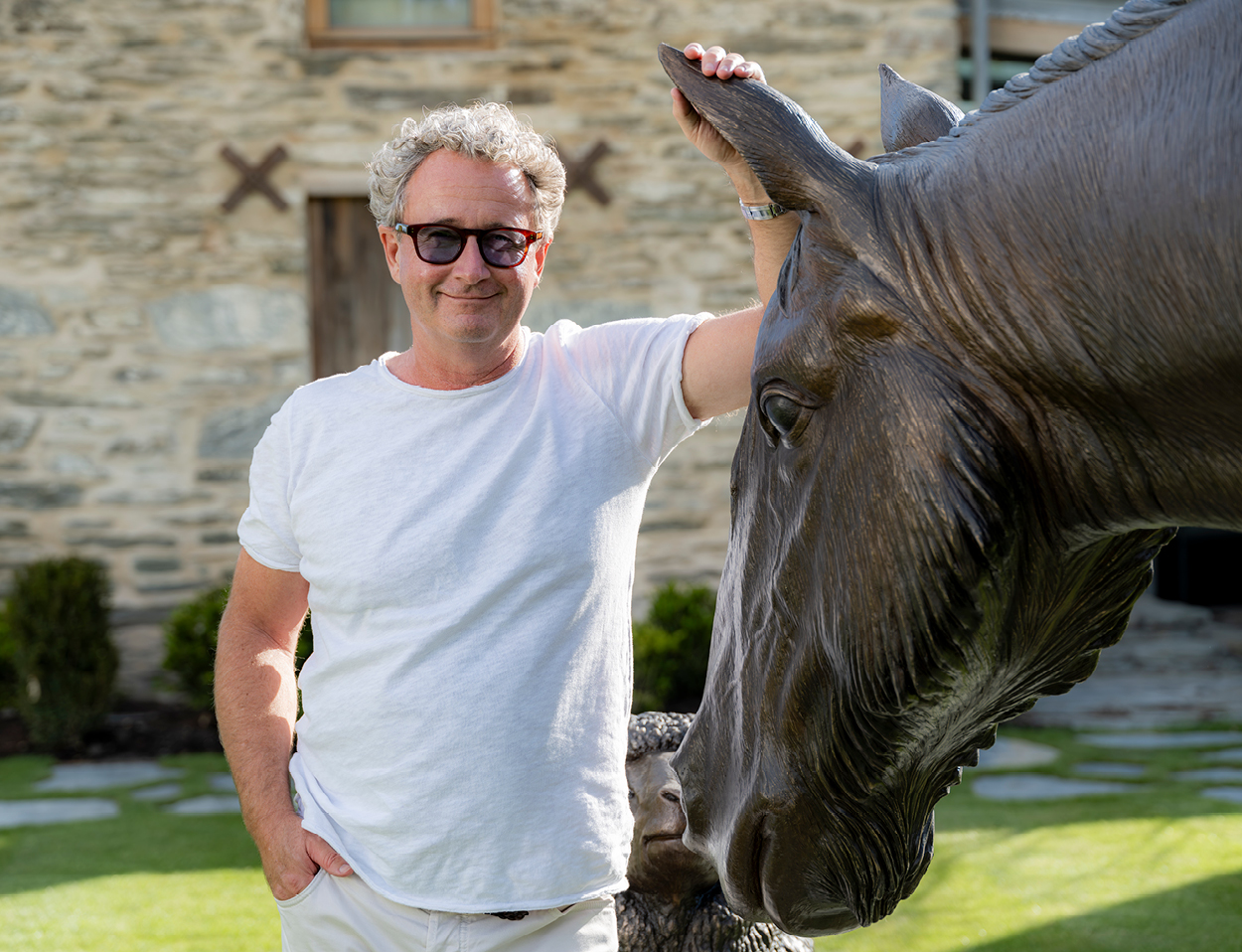
Granted, from an outsider’s perspective it does feel a little more complicated, given Meehan’s incredible rise from young Kiwi expatriate to trans-tasman property mogul. Although the core tenets of a dedicated work ethic, an expansive vision and plenty of ambition have clearly remained the potent mix underpinning his success.
Back in 2000, Meehan founded Belle Property in Sydney, a company he built by selling high-end, design-led homes and bolstered through a clever association with (at the time) Kerry Packer’s glossy interiors publication of the same name and branding (a title he eventually acquired). As a young up-and-comer in the industry, it was a bold move, and one that not only gave Meehan’s business a competitive edge, but that offered early proof of the entrepreneur’s ability to think outside the box, and of his desire to build businesses with quality and pedigree as their bedrock. But while Belle was undeniably successful, it was never Meehan’s end goal, with the developer explaining how, after selling the company in 2009, he turned his focus to Winton, planting the seeds for something that would see him undertaking projects of a far greater scale.
“For Meehan, the process of building Winton has been purposeful and painstaking, a path paved by the developer’s characteristically patient approach.”
“Belle Property, was a great place to start because it was very much a design-led business where we specialised in the sale of designer property and we also had the magazine, so that was a niche that we really owned in Australia,” Meehan explains, “but it was a means to an end for me,” he pauses, “a good means and a good end, but the big-scale projects that I’m doing with Winton now… nothing compares.”
For Meehan, the process of building Winton has been purposeful and painstaking, a path paved by the developer’s characteristically patient approach. This has not only allowed Meehan to grow his business sustainably, but has reduced (or virtually eliminated) his reliance on banks or borrowed capital, keeping Winton in an undeniably strong position, unhampered by debt. “When I sold Belle, we didn’t have a huge amount of capital but we had enough to start some smaller projects,” he tells me. “As we went on, we just kept reinvesting our profits and eventually the projects grew in scale, and now, 15 years on we’re building towns.”
This is not hyperbole. Winton’s developments are known for being eye-watering in scale, often encompassing hundreds of residential buildings, a commercial or hospitality hub and a variety of public spaces. They are also unparalleled in their attention to detail, each project boasting the kind of high-quality, timeless design that one might expect to find in a premium single dwelling, but certainly not reproduced en masse and without compromise. “We put about 10 times as much thought into the design of our projects than any other developers would,” Meehan tells me, explaining how he spends most of his working hours with Winton’s design team, going through every inch of his projects meticulously. It is, he tells me, the part of his job he loves the most. “I’ve always thought, in my business,” Meehan suggests, “that if I can just get the product right, like really right, then the money will flow from there.”
It is certainly a unique approach for someone operating at the top of an industry in which profit is often the chief driver — an attitude that wouldn’t usually leave room for the kind of detail on which Winton has built its reputation. But if Meehan’s formula has proven anything, it is that good design is timeless and quality will, as he predicted, always sell. “We’ve got enough sitting in our landbank now for about 7,000 lots,” Meehan reveals, “and we’re always buying more. We like to keep about 10 years of runway ahead of us.”
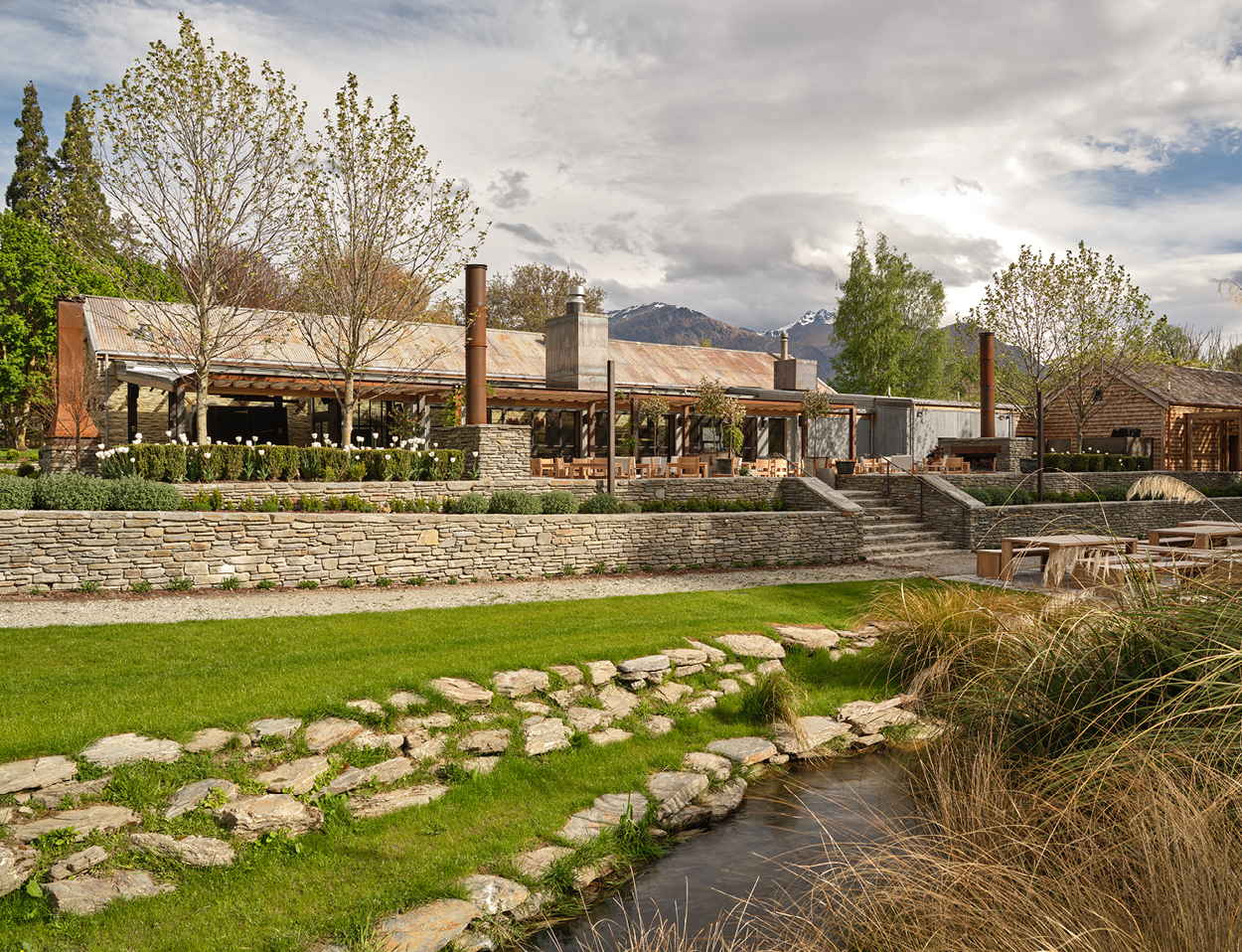
One particularly spectacular example of Winton’s unique handiwork is Ayrburn, a sprawling new hospitality precinct that opened late last year on a piece of historic land just outside of Arrowtown. Comprising a series of dining and entertaining venues (with still more to open), sweeping gardens, public spaces and a series of residential developments to come, Ayrburn has not only been one of Meehan’s most ambitious projects, but is also the one, he reveals, he has enjoyed working on the most. “We bought the property in 2015, so it’s been a nearly-10-year process bringing it to life,” he says. “But it’s probably been the most fun I’ve ever had on a project,” he pauses. “I know that I won’t find another piece of land like that in my lifetime, one with a rich history, 160-year-old trees, a beautiful creek running through it, historic buildings framed by mountains and a close proximity to such an iconic town… it has definitely been a passion project for me, and I’m so proud of how it has come together.”
Indeed, Ayrburn is a striking showcase of Winton’s extraordinary vision and unparalleled execution. Its generous grounds have been manicured to perfection, with Meehan explaining that in time, they will grow to become one of the most jaw-dropping botanic gardens in New Zealand. Its historic buildings (despite being already existing on the property) have each been painstakingly rebuilt by specialised tradespeople who spent years ensuring that they would be fit for purpose (and adhere to modern building codes) while remaining true to their century-old provenance. Really, you only have to drive through Ayrburn’s understated entranceway to immediately understand how it truly stands apart as a development that has been designed for the future. For me, it brings to mind the old adage of a society growing great because of those who plant trees in whose shade they will never sit. Only time will show the true potential of what has been created there.
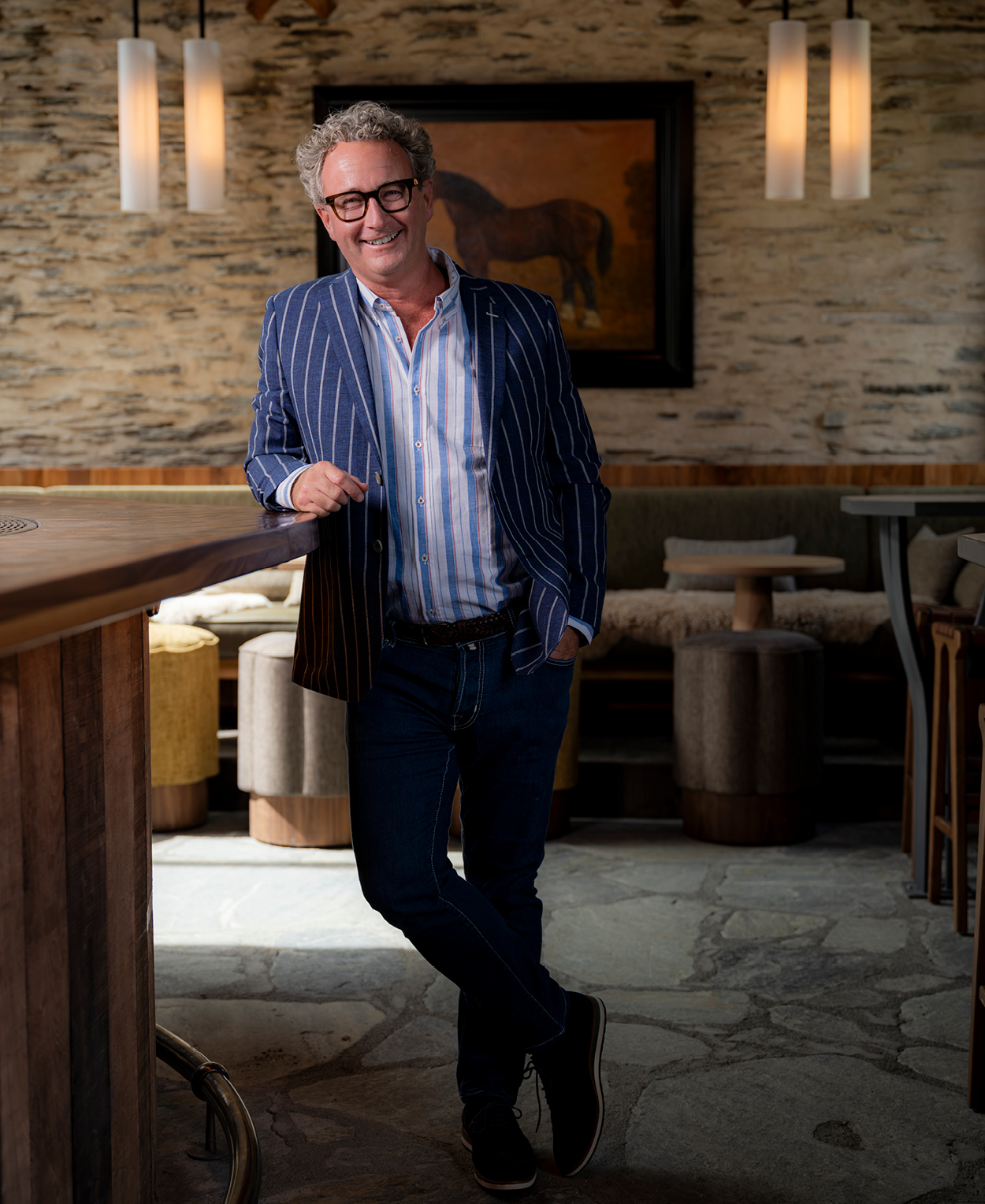
But Ayrburn is just the first in a series of exciting new projects by Winton where hospitality is at the heart; precincts in which premium residential developments and food and beverage offerings have been designed to go hand-in-hand. For Meehan, this is simply an extension of Winton’s more holistic development model; a reflection of its long-standing commitment to combining residential offerings with commercial hubs in order to offer lifestyle with longevity — something that goes well beyond nice new buildings alone.
On entering the hospitality space in such a significant way, Meehan explains that his philosophy is simple: “You’ve got to have an incredible location, you’ve got to be in the sun, and you’ve got to be near some kind of water,” he says. “If you get those three things right then you have the foundations for an incredibly successful hospitality offering.” And while Ayrburn, of course, ticks all of those boxes, there’s another major project currently taking shape a little closer to home that is promising to not only reimagine Auckland’s Wynyard Quarter precinct, but also, to completely change the ways in which we will be able to enjoy our waterfront.
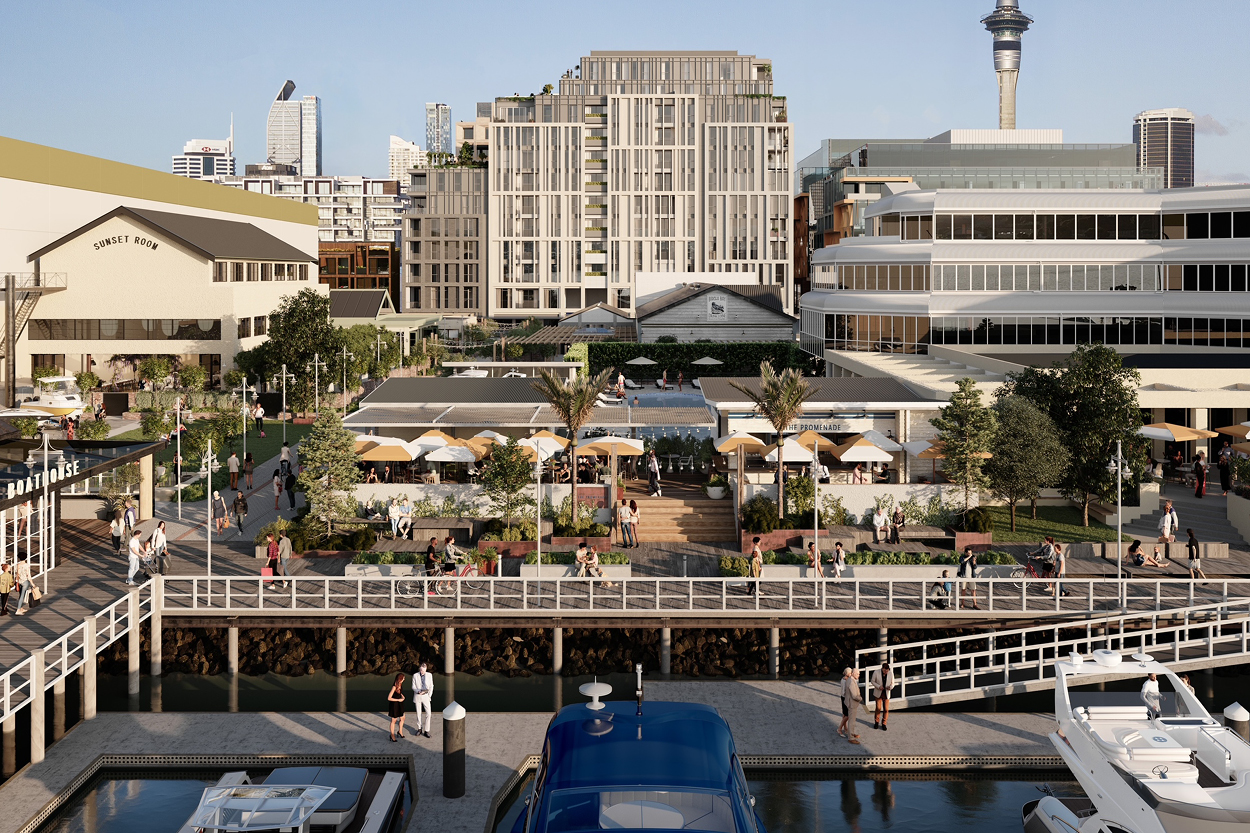
Cracker Bay, set on a sprawling section of prime, waterfront real estate, is the expansive new hospitality precinct that Winton is currently underway with. When finished, it will comprise a series of hospitality venues, from grab-and-go eateries to formal restaurants and a spectacular event space overlooking Auckland’s sparkling Waitemata Harbour, as well as a private members’ club and a public walkway that will allow more people to take in the stunning vistas of Auckland’s waterfront. In what I am coming to understand as Winton’s modus operandi, it seems that no detail here has been left to chance, with Meehan explaining that, in honour of the site’s history, many of the existing heritage buildings will be carefully reconstructed, and that because of its positioning, Cracker Bay will offer something utterly unique in Auckland. “It’s west-facing so not only will it be bathed in sun but it will be sheltered from the wind, and we’ve called on some really clever people from all over the world to run it for us so it’s going to be a fun place,” he tells me, with a twinkle in his eye.
Really, Meehan is in the business of changing the ways in which people live. Not just where they live, but how. Cracker Bay, while incredible as a standalone project, is actually part of a much larger vision that will marry its vast and varied hospitality with a luxury apartment development across the road called The Villard and alongside that, another new offering that is reimagining the idea of life after retirement — Northbrook.
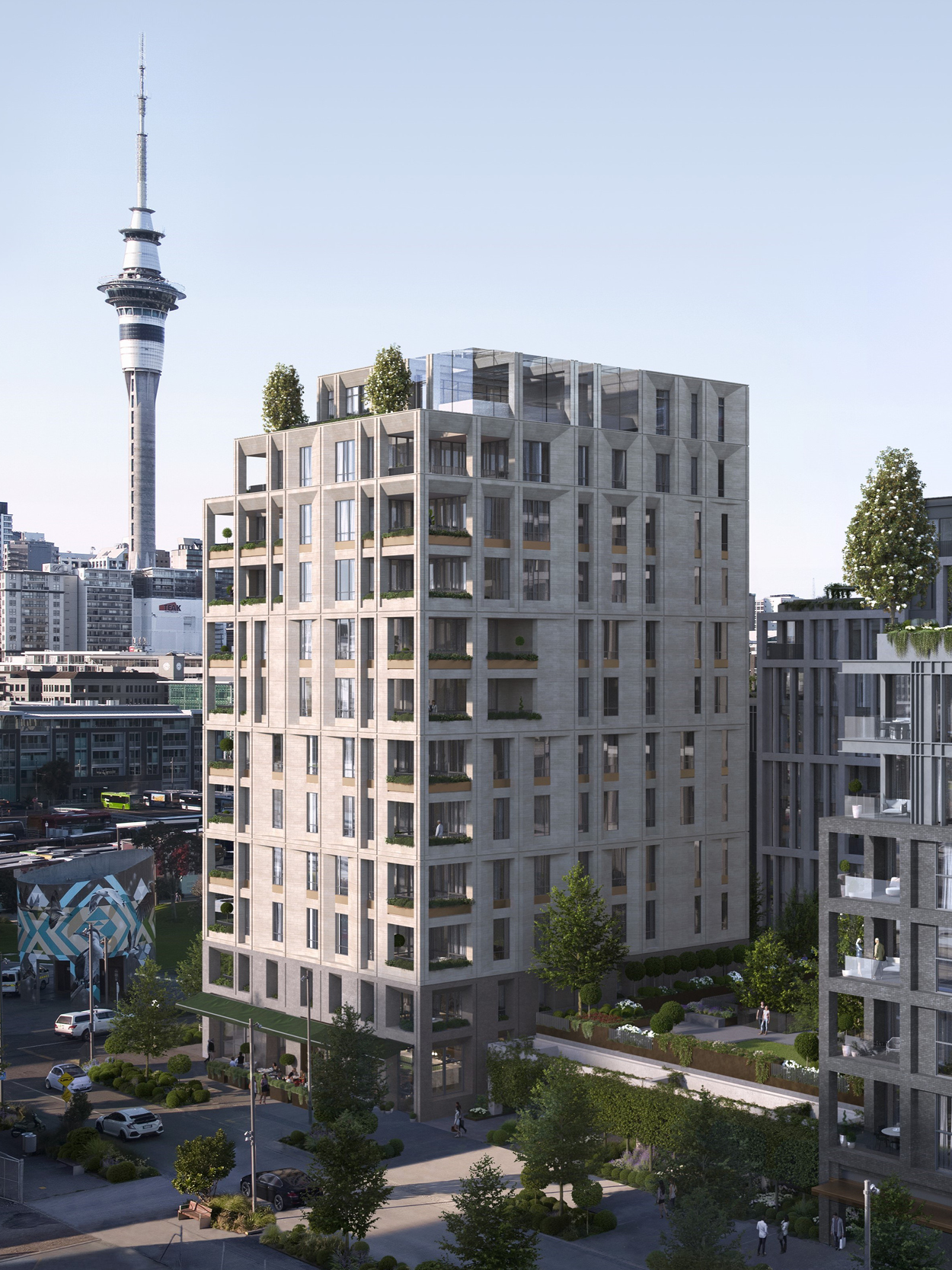
“When we looked at the demographic of New Zealanders who were a little older and who had lived with luxury goods and services their whole lives, they weren’t generally the bingo-and-bowls types,” Meehan tells me, with a chuckle. “We saw a big hole in the market for a residential concept that would flip the idea of retirement on its head, and so, Northbrook was born.”
Offering what Winton has called ‘luxury later living’, Northbrook is a series of residential developments that not only provide older New Zealanders with a beautiful place to live in their twilight years, but promise an idyllic lifestyle for those seeking something more sophisticated for their retirement. From impeccably designed apartments that have been fitted with subtle additions to make living easier, to elevated social spaces, including restaurants and bars, in which residents can mingle, to ensuring that the developments’ locations are only a stone’s throw away from Winton’s other new hospitality precincts (including Cracker Bay and Ayrburn), Northbrook seems the only retirement concept in New Zealand that is actually responding to the needs and desires of its target demographic, and it’s a space in which Meehan is predicting incredible growth over the next few years.
“Meehan is a developer whose passion for his work permeates everything he does, creating better, more desirable and certainly more liveable spaces as a result.”
“Already the uptake for Northbrook has been really strong,” the developer says, “and most of the people who are buying into these apartments are the kinds who swore that they would never consider a retirement home.” He continues, “but really, that’s just a reflection of how we’re doing things so differently… it will be like moving into a luxury hotel with your mates,” he smiles, “who wouldn’t want that?”
Indeed, the potential that Meehan sees in his Northbrook concept is clear in his commitment to its growth, with sites already underway in Auckland’s Wynyard Quarter and Launch Bay, as well as in Wanaka and Arrowtown, and in Christchurch’s Avon Loop, too. “The retirement business will be a significant part of our overall portfolio in five years time,” he tells me, “and while we’ve got five in the works now, we see demand for between 12 and 15 Northbrook retirement developments up and down the country in the coming years.”
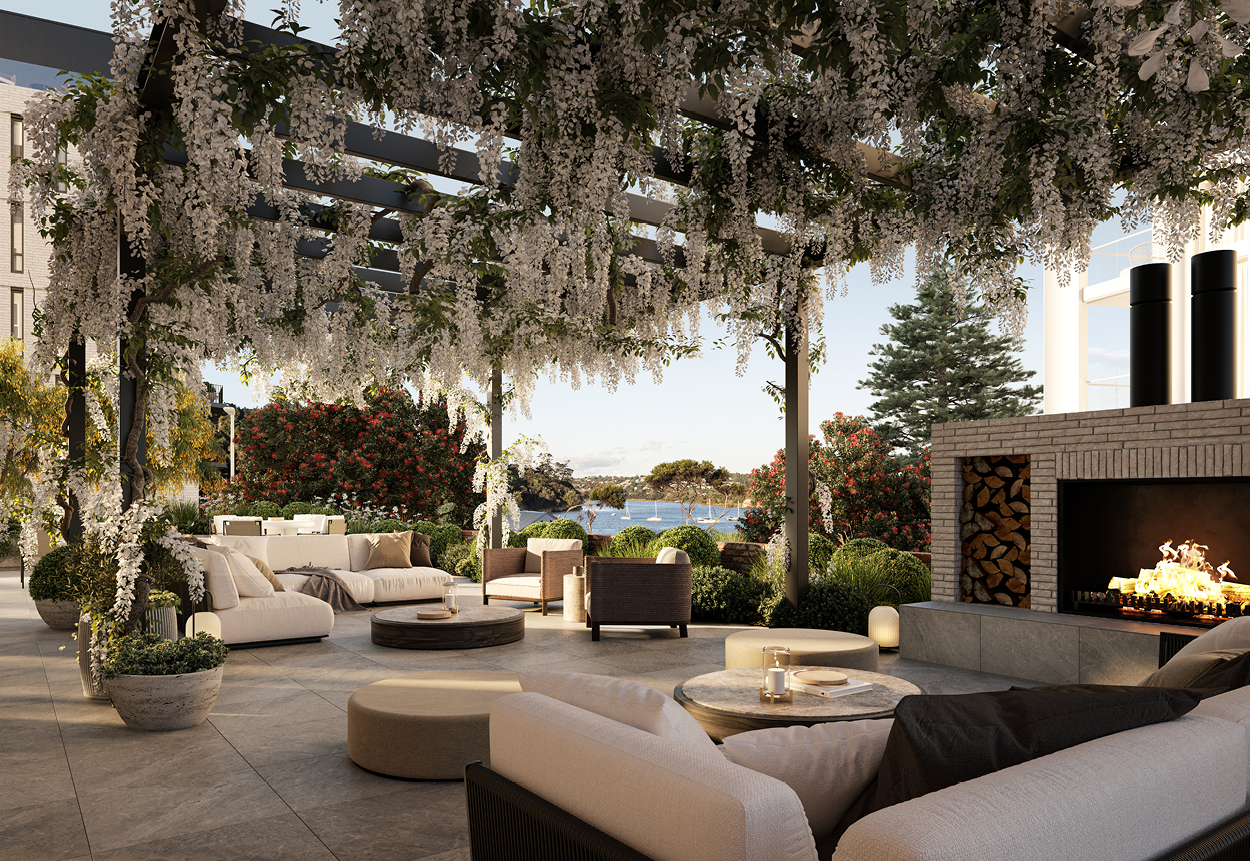
This focus on larger, more ambitious projects that will allow Winton to hone its expertise on one area is something that Meehan says is his goal. “We’ve got about 26 projects on the go at the moment but I’d like to get that down to about a dozen,” he says. “We do those big ones so well that I think they should be our primary focus.”
One such project that Meehan outlines as a major focus of his going forward is Sunfield, a groundbreaking development in Papakura that will literally conjure a township out of thin air. Sunfield will boast around 400,000 square-metres of commercial space and some 5,000 new (and affordable) homes. It will offer a radical new approach to living that hinges on the idea of people not wanting to spend hours commuting everyday and as such, the Sunfield neighbourhood will be designed for those who work and live within its boundaries, with Winton creating all the amenities that a typical township might need, from supermarkets to schools to public parks, playgrounds and more. It’s a fascinating concept, and one that will require the next 15-or-so years to bring to fruition. If, that is, it can survive the daunting process of procuring consents to go ahead.
Unfortunately, the fact remains that in New Zealand, much of Meehan’s job as a developer involves a seemingly endless barrage of bureaucratic challenges and nonsensical red tape that can stymie creativity and growth from the outset. It’s something about which the developer is very vocal. “In New Zealand, we’ve gone from this number-eight-wire mentality to what feels like ‘10 reasons why you can’t do something,’” he says. “The bureaucracy is out of control here and there’s no reason for it.” He continues, “at the moment, collectively, we only build on one percent of our landmass, and yet we’re facing a housing crisis,” he pauses, “It doesn’t make sense.”
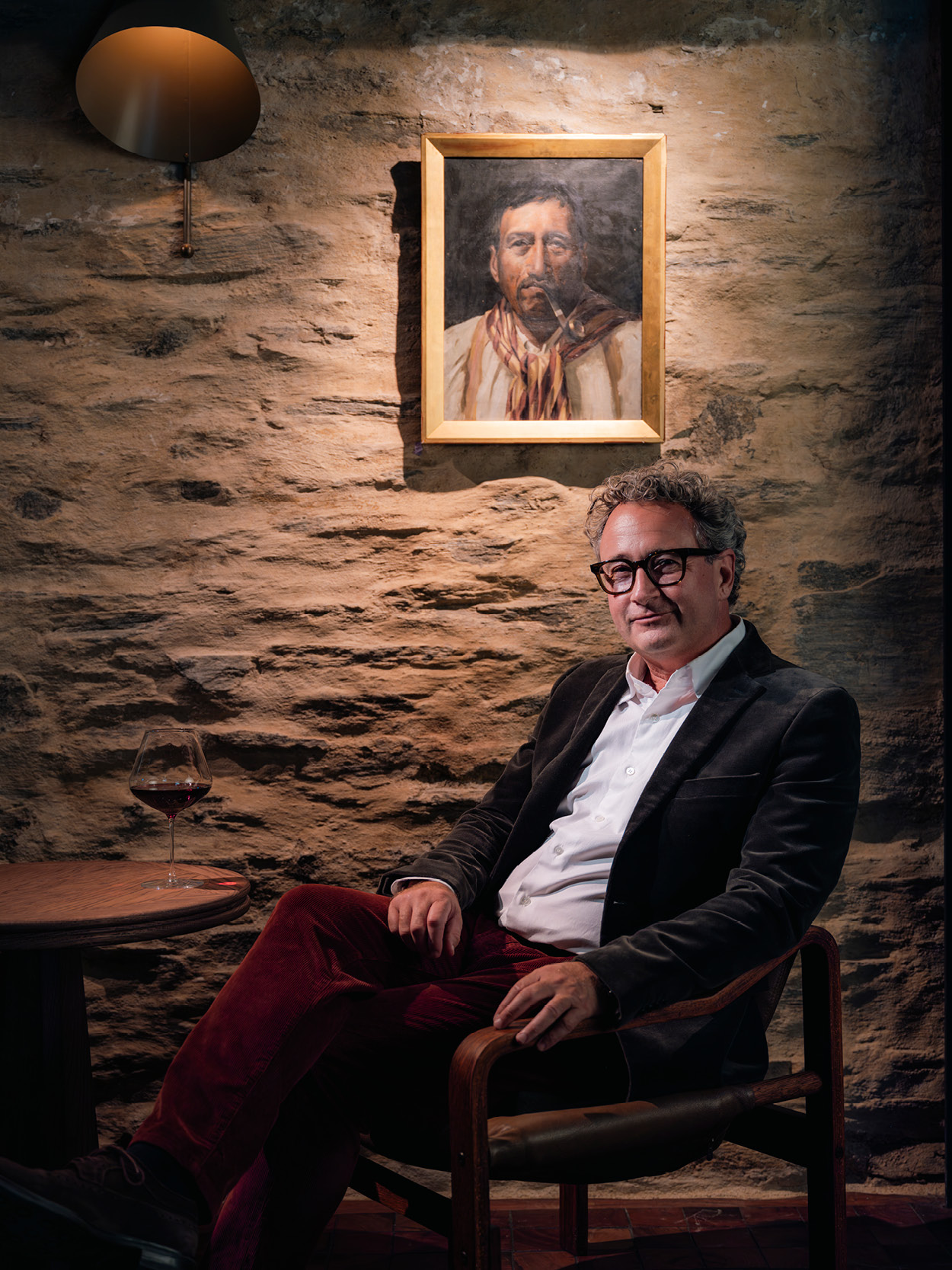
In almost all of his projects Meehan has had to overcome opposition from local councils and face court cases in which he has had to prove himself to the powers that be, showcasing again and again the ways in which Winton is developing for the future, how it is creating better spaces for us to live and work and play in, and how, at its core, its ethos is about honouring the beauty of New Zealand with developments that will stand the test of time. “I have an incredible team of the very best people around me,” Meehan says, “and I guarantee that if you asked around my office, the only thing they would say they found frustrating about their work would be the bureaucracy, I can only hope it changes soon.”
The truth is that what Meehan has achieved with Winton is already changing our landscapes and lifestyles in significant ways. From the incredible sites he secures, many of them central to our enjoyment of a particular city or town, to the integrity with which he designs, refusing to cut corners or leave any detail to chance, Meehan is a developer whose passion for his work permeates everything he does, creating better, more desirable and certainly more liveable spaces as a result.
In an industry that can get a bad rap for developing sites with a ‘profits over people’ approach, Meehan and his team are proving (in a big way) that by putting people first, by taking the time to understand how they want to live, and by offering something that is high quality, luxurious and lasting, profits and growth tend to follow. And while his success in this space is undeniable, it’s never been Meehan’s chief driving force. “I feel like I get to come to work everyday and do my hobby,” he tells me, smiling. “Being able to design something beautiful, something that inspires me, and then to bring it to life and watch others enjoy it, that’s all I’ve ever wanted to do, and it’s pretty satisfying.”

